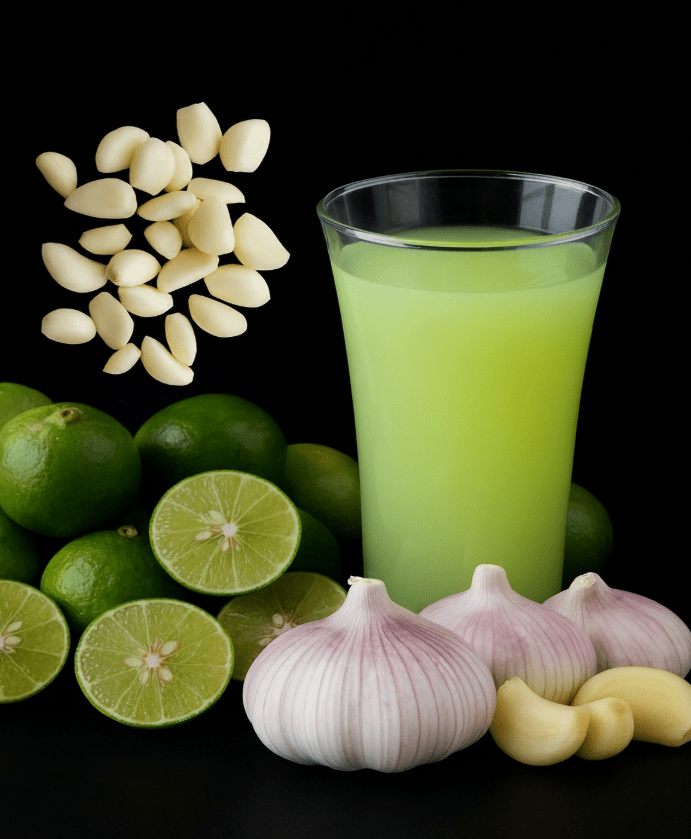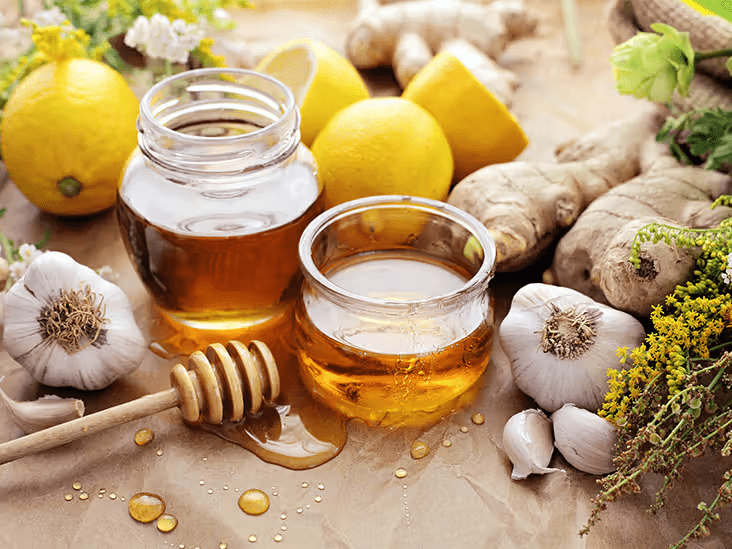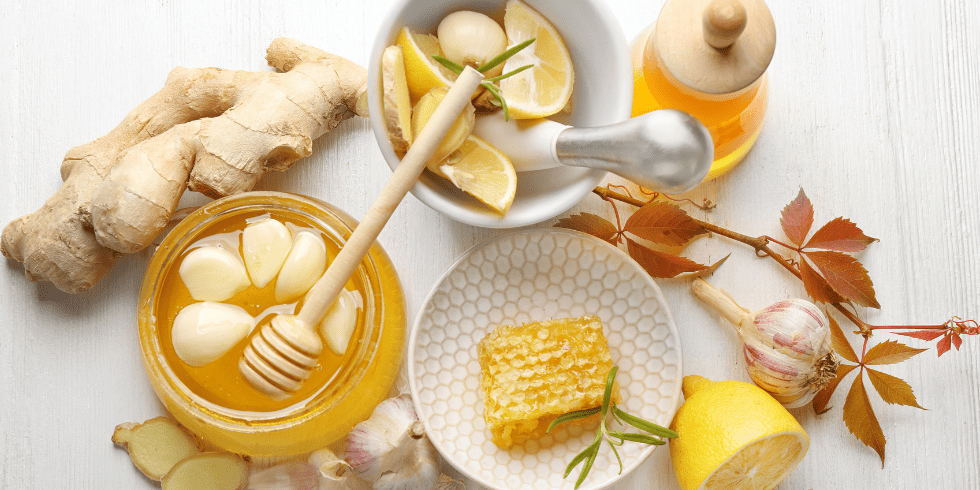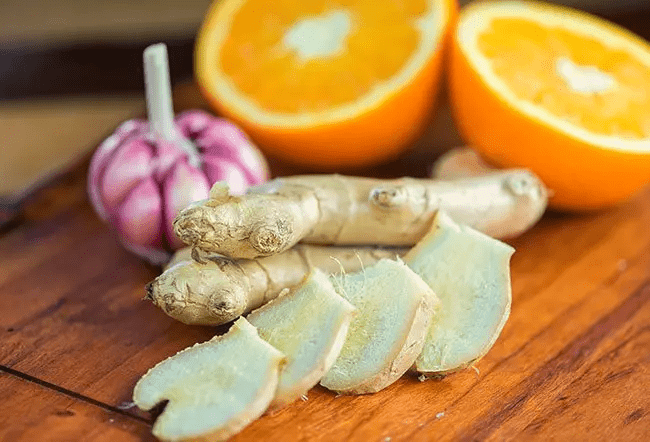
Ginger, Onion, Garlic, Lemon & Honey Mix: How to Make It and Why It Matters

Every kitchen holds simple ingredients that can be surprisingly powerful when combined. Ginger, onion, garlic, lemon, and honey are staples found in homes worldwide. But when you grate, blend, and mix them together, something interesting happens: you create a traditional tonic that has been passed down in many cultures as a natural way to support wellness.

Why do so many people swear by this mixture? According to a global survey, nearly 65% of households across Asia, Africa, and Europe use some form of homemade herbal remedy at least once a week. The appeal is simple: these are everyday foods with recognized bioactive compounds, antioxidants, and natural oils that can support health in gentle but effective ways.
In this article, you’ll discover how to prepare this mixture step-by-step, explore what science and tradition say about its uses, and learn practical tips for including it in your daily routine. Whether you’re curious about natural home remedies or looking for a nourishing boost, this guide offers both knowledge and actionable advice.
The Ingredients: Why This Combination Works
Each ingredient in this mixture carries unique properties, and together they create a synergistic effect that makes the tonic so widely appreciated.
Ginger
- Contains gingerol, known for its antioxidant and soothing qualities.
- Traditionally used in teas and tonics to support digestion and ease occasional nausea.
Onion

- Rich in quercetin and sulfur compounds.
- Long linked with heart health and circulation in traditional diets.
Garlic
- Packed with allicin, a compound with natural antibacterial and antifungal properties.
- Often incorporated into traditional medicine systems for immune support.
Lemon Juice
- A natural source of vitamin C.
- Brightens flavor while also supporting hydration and skin health.
Honey
- Contains enzymes and natural sugars that preserve the mixture.
- Known for soothing the throat and providing quick energy.
When grated and combined, these ingredients not only balance each other’s flavors—spicy, pungent, tangy, and sweet—but also create a nutrient-dense tonic that has both culinary and wellness appeal.
Step-by-Step: How to Make the Mixture at Home
Here’s a simple recipe you can follow:
| Ingredient | Quantity | Preparation |
|---|---|---|
| Fresh ginger | 2 tablespoons | Grated |
| Onion | 1 medium | Finely grated or blended |
| Garlic | 3–4 cloves | Grated or crushed |
| Lemon juice | 2 tablespoons | Freshly squeezed |
| Honey | 2–3 tablespoons | Raw or organic preferred |
Method:

- Grate the ginger, onion, and garlic into a clean bowl.
- Add the freshly squeezed lemon juice.
- Mix in the honey and stir well until combined.
- Transfer into a glass jar with a lid and store in the refrigerator for up to one week.
Serving tip: Take one teaspoon in the morning, preferably on an empty stomach, with warm water. Some people also use it as a marinade or salad dressing base for added flavor.
Traditional Uses and Modern Insights
For centuries, variations of this mixture have been used in Ayurveda, Traditional Chinese Medicine, and folk practices in the Mediterranean and Middle East. While traditions vary, the underlying idea remains the same: combining warming spices, pungent roots, and natural sweeteners creates balance.
Modern research has highlighted several possible benefits:
- Immune support: Garlic and ginger compounds may help the body’s natural defenses.
- Respiratory relief: Onion and honey have been used traditionally to soothe the throat.
- Digestive aid: Ginger and lemon may support stomach comfort and digestion.
- Circulation and heart health: Garlic and onion compounds are studied for their potential effect on blood flow.
While these uses are promising, it’s important to remember that this mixture is not a substitute for medical treatment but rather a complementary practice rooted in tradition.
How to Incorporate It Into Your Lifestyle

Beyond taking a spoonful daily, there are many creative ways to add this mixture to your diet:
- Morning wellness shot: Mix one teaspoon with warm water.
- Tea booster: Stir into herbal tea for extra flavor and comfort.
- Salad dressing base: Combine with olive oil for a zesty, immune-supportive dressing.
- Cooking marinade: Use it for chicken, fish, or vegetables to add a unique punch of flavor.
Consistency is key. Using this mixture regularly—even in small amounts—can make it a flavorful part of a balanced lifestyle.
Case Study: A Family Tradition
In rural northern India, families often prepare a similar mixture at the start of winter. Each morning, grandparents, parents, and children take a spoonful before breakfast. Locals believe it “warms the body” and helps keep seasonal sniffles at bay.
Similarly, in Mediterranean households, honey and lemon have long been combined with garlic to support seasonal wellness. These family traditions highlight not just the practical use of natural foods, but also the cultural value of passing remedies down through generations.
Practical Considerations and Tips
- Taste adjustment: If the onion or garlic feels too strong, add extra honey or lemon.
- Storage: Always keep refrigerated to preserve freshness.
- Safety note: People with allergies to honey, garlic, or citrus should avoid this mixture.
- Medical conditions: Those taking medications for blood thinning or diabetes should consult a healthcare provider before using this mixture regularly.
Conclusion
Is this mixture a magic cure-all? No. But it is a simple, natural blend of everyday ingredients that cultures around the world have trusted for centuries. It combines nutrition, tradition, and taste in a way that makes it worth trying at home.
Quick Recap:
- Ginger, onion, garlic, lemon, and honey each offer unique supportive qualities.
- Together, they create a tonic valued for immune support, digestion, and flavor.
- You can prepare it in minutes and use it in multiple ways.
- Always remember to use it as part of a balanced lifestyle, not as a replacement for medical care.
Disclaimer: This article is for educational purposes only. The information provided is not intended to diagnose, treat, or replace professional medical advice. Always consult a healthcare provider for concerns about your health.
News in the same category


Unleash Your Inner Lion: The Ultimate Egg, Honey, and Coffee Elixir for Men’s Vitality

7 Silent Sleep Killers Sabotaging Seniors’ Health (And How to Fix Them Tonight)

Moringa Unleashed: Discover the Secret Superfood That Can Revolutionize Your Health

Discover Grandma’s Secret: A Natural Remedy to Banish Varicose Veins

7 Teas That Stop Swollen Legs, Ankles, and Feet for Good

7 Powerful Ways Prosopis Juliflora Boosts Digestive and Heart Health

Purslane: A Natural Support for Lungs and Back Health

Indian Borage (Mexican Mint): A Herbal Drink for Eye Health

Aloe Vera Remedy: A Natural Support Against Bacteria and Fungi

4 Teas for 4 Organs: Liver, Stomach, Heart & Brain

Over 60? Drink These 3 Teas to Rebuild Muscle and Walk Strong Again

Knee Pain Relief Starts with THIS Powerful Drink (Must Try for Seniors!)

Seniors, Do This 1 Simple Leg Move to Reverse Hidden Health Problems

Stronger Than Garlic and Lemon: The Bay Leaf Foot Soak That Removes Toxins and Bacteria

Herbal Tea from Stonebreaker Plant for Brain and Memory Support

I Applied Toothpaste and Vaseline on My Face – Here’s What Happened

Parsley Juice for Kidney Cleansing and Stone Relief

All-in-One Master Tonic Shots: Fire Cider with Apple Cider Vinegar, Cinnamon, Clove, Lemon, Ginger, Turmeric, Cayenne & Honey
News Post

Unveil the Mystery: 10 Japanese Rice-Based Secrets for Radiant, Wrinkle-Free Skin

Unleash Your Inner Lion: The Ultimate Egg, Honey, and Coffee Elixir for Men’s Vitality

7 Silent Sleep Killers Sabotaging Seniors’ Health (And How to Fix Them Tonight)

Moringa Unleashed: Discover the Secret Superfood That Can Revolutionize Your Health

Discover Grandma’s Secret: A Natural Remedy to Banish Varicose Veins

A Boy’s Hand Shows Strange Signs After Playing in the Sand

7 Teas That Stop Swollen Legs, Ankles, and Feet for Good

7 Powerful Ways Prosopis Juliflora Boosts Digestive and Heart Health

Purslane: A Natural Support for Lungs and Back Health

Indian Borage (Mexican Mint): A Herbal Drink for Eye Health

Aloe Vera Remedy: A Natural Support Against Bacteria and Fungi

4 Teas for 4 Organs: Liver, Stomach, Heart & Brain

Over 60? Drink These 3 Teas to Rebuild Muscle and Walk Strong Again

Knee Pain Relief Starts with THIS Powerful Drink (Must Try for Seniors!)

Seniors, Do This 1 Simple Leg Move to Reverse Hidden Health Problems

Stronger Than Garlic and Lemon: The Bay Leaf Foot Soak That Removes Toxins and Bacteria

Herbal Tea from Stonebreaker Plant for Brain and Memory Support

I Applied Toothpaste and Vaseline on My Face – Here’s What Happened
